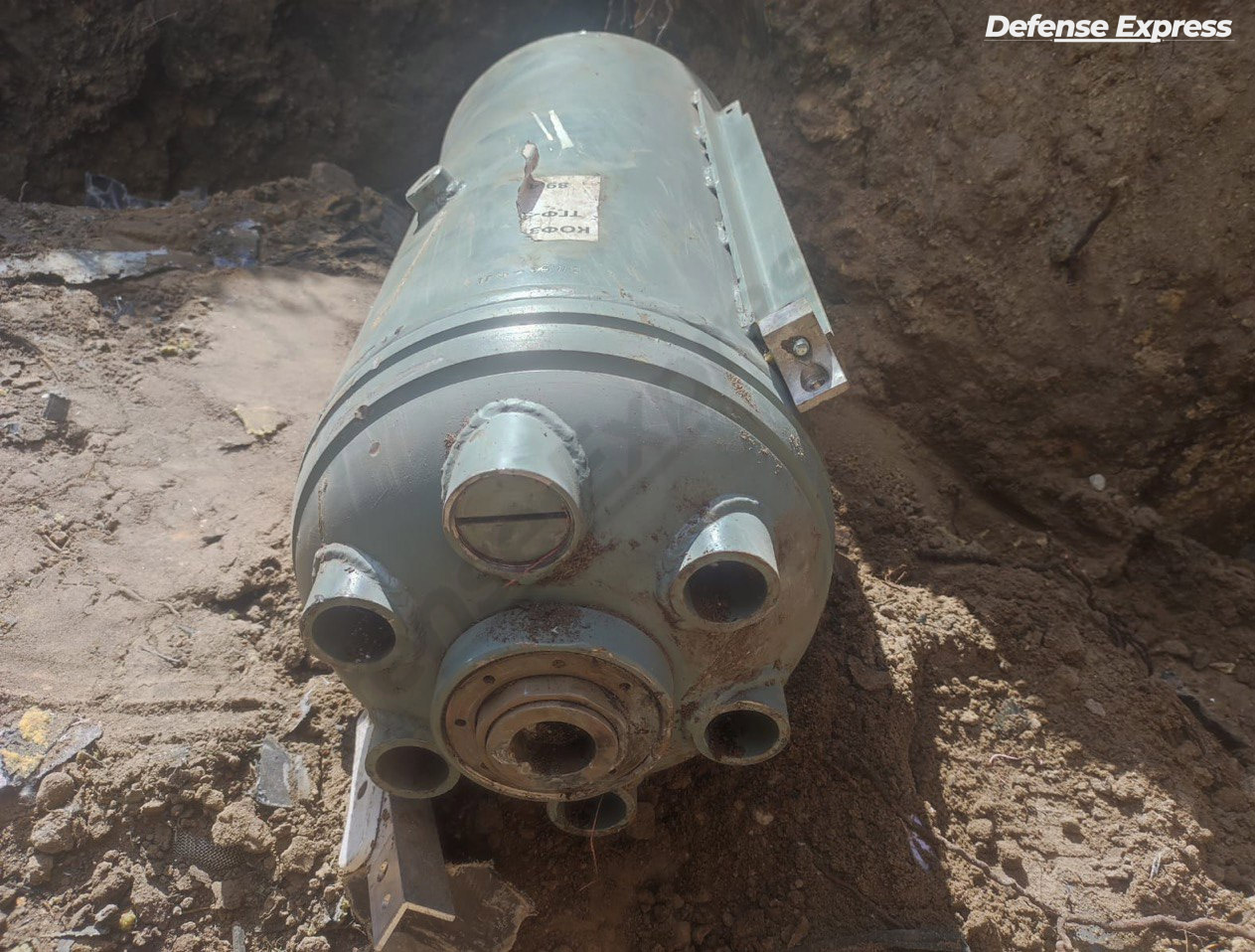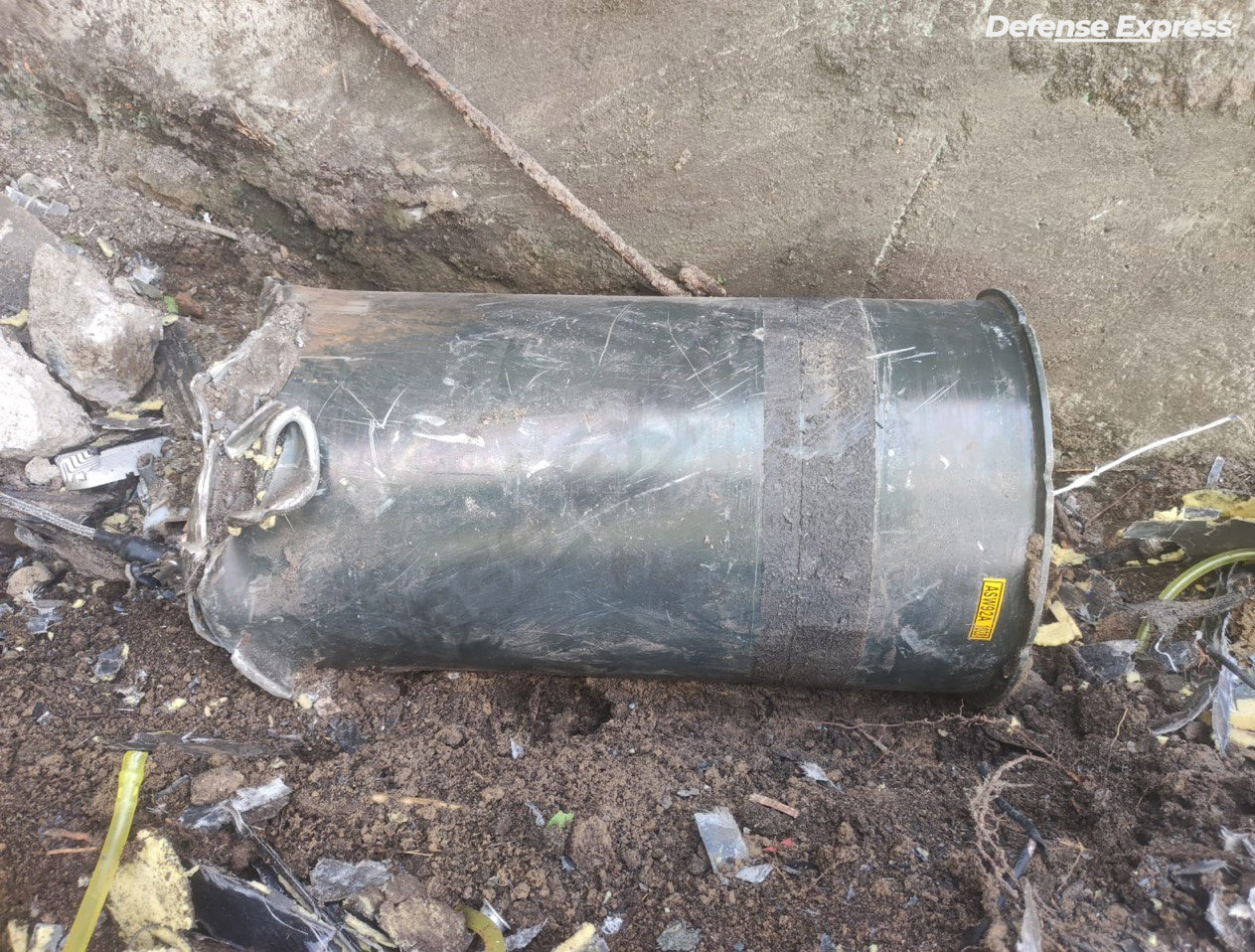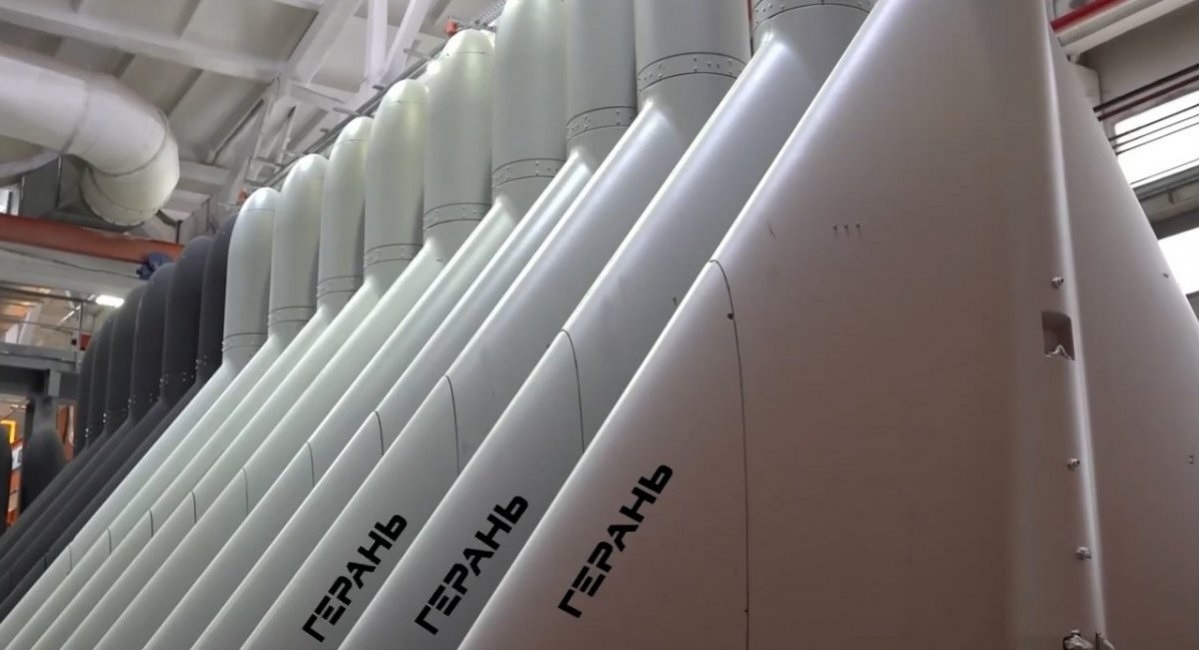Long-range strike forces of russia started using two new types of warheads with Shahed-136 one-way attack drones. One of these novelties was made in russia, while the other is courtesy of allied iran. Both have an increased weight of 90 kg, up from standard 50 kg.
News Hub learned the details from its sources familiar with the matter, received photos and a description of Shaheds’ new equipment.

The new 90-kg warhead of russian production was designated KOFZBCh which is an acronym for “shaped-charge-fragmentation-high-explosive-incendiary warhead.” The explosive remained unchanged: TGF-35P2 which is TNT mixed with phlegmatized RDX, same as in the standard 50-kilogram OFZBCh-50 warhead that lacked the anti-armor effect. The incendiary action is achieved by using a powder mixture of metal hydrides giving a high combustion temperature of up to 3,500°C.
For a reminder, since December 2024, the russian invasion forces have been using a similar combined-action warhead with all the ant-tank, HE-FRAG, incendiary components labelled BST-52, but its weight was about 50 kg.
Next, the iranian-made new warhead also weighs 90 kg and combines shaped-charge, high-explosive, and fragmentation action. That is, it does not incorporate incendiary elements. The device belongs to the OLA-series explosives, based on octogen and aluminum with an intermediate charge made of RDX.

Generally, the russian forces have introduced several new Shahed warhead types over the past year. In 2024, they started equipping the drones with the TBBCh-50 warhead (50-kg) with thermobaric and fragmentation effects. It’s known for its characteristic body coated with premade fragmentation in the form of 9-mm metal balls.
The appearance of an iranian warhead, on the other hand, signals a continued close cooperation between Moscow and Tehran in the production and modernization of Shahed-136 — despite russia reaching a certain independence in producing these drones by launching domestic assembly lines in Alabuga, Tatarstan, and at the Kupol enterprise in Izhevsk.

Besides refining the explosive payload, there are other ways russians modernize Shaheds. For example, their drones rely on domestically engineered satellite navigation systems resistant to electronic warfare and refine tactics. At the same time, Ukraine is keeping up in this race and fields its own anti-Shahed solutions, like the recently presented specialized hunter drone, jamming and spoofing techniques, and so on and so forth.

